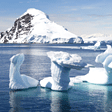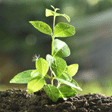- Home >
- Our Actions >
- Ambassador report
5
Comments
Scientists say Australia's mammal extinction rate could worsen |
|---|
|
by Sumit Chowdhury | 15-05-2018 23:02
|
|
Australia's extinction rate for mammals, already the highest in the world, could worsen unless efforts are made to protect the most endangered species over the next two decades, scientists said Tuesday.
Researchers from the government-funded Threatened Species Recovery Hub identified 10 Australian birds and seven mammals whose extinctions could mostly be prevented if governments and communities were made aware of the risks they faced.
This would be an increase in Australia's exceptionally dire extinction rate, which for mammals is the highest in the world. Over the last two hundred years at least 34 Australian mammal species and 29 birds have become extinct. Identifying the species at greatest risk of extinction is a crucial first step in avoiding their extinctions.
The most at-risk bird is the endangered King Island brown thornbill, found on an island off the island state of Tasmania. It has little more than a five percent chance of surviving the next 20 years unless conservation efforts are stepped up, the researchers said.
Other birds that have a 50-50 or greater chance of becoming extinct include the orange-bellied parrot, western ground parrot, plains-wanderer, regent honeyeater and herald petrel. Most are found on islands or in the more heavily developed regions of southern Australia.
In the case of mammals, the central rock-rat a small rodent that lives in the arid areas of central Australia has an estimated 65 percent chance of becoming extinct over the next two decades. Second on the at-risk list is the northern hopping-mouse, another small rodent, at 48 percent.
Another rodent, the Carpentarian rock-rat, as well as the Christmas Island flying-fox bat, are also among the most in peril. Many of the at-risk mammals are from northern Australia, which is already experiencing a rapid and severe decline in mammals generally.
The two most-recent mammal extinctions were the Bramble Cay melomys and Christmas Island pipistrelle, which disappeared from Earth in the past decade. A study released in 2014 said Australia's mammal extinction rate was the world's highest, with more than 10 percent of species wiped out since Europeans settled the country two centuries ago. The main causes of species decline that have been identified include habitat loss, such as through land clearing and other development, and feral cats and foxes.
|

|
|
|










 Previous : Cleanliness Campaign
Previous : Cleanliness Campaign









5 Comments
Hi Sumit!
I concur with your statement that identifying the critically endangered species is a fundamental first step to conserving their birds and animals!
Lovely report!
Posted 31-05-2018 07:51
Hello Sumit, the current status of biodiversity level in Australia does not look 'officially acceptable' in its rate. Australia has been thought (personally) as 'one of the most care-taking countries in the world about rare and unique species', since it has a lot of indigenous species here. However, apart from these environmental conditions, it is avoidable that endangered species mentioned above are facing 'direct impacts from human activities'.
As Gyeongrin mentor said, this issue should be taken in procedural habitat rehabilitation and other relative solutions!
Posted 19-05-2018 23:46
Thanks for making us aware. 👍
Posted 17-05-2018 07:30
Hello Sumit
Thanks for informing us about the biodiversity status quo in Australia. As the report says, I also think that the biggest reason for animals going extinct is because of habitat loss. Due to industrialization and urbanization we have taken away their living places. Now that we know that the world is suffering with this problem, more should be considered when new infrastructures are built and of course follow up measurements to offer new habitats for these animals should be proceeded!
Thanks for the report
Posted 17-05-2018 00:41
thank you for sharing, good job
Posted 16-05-2018 22:42